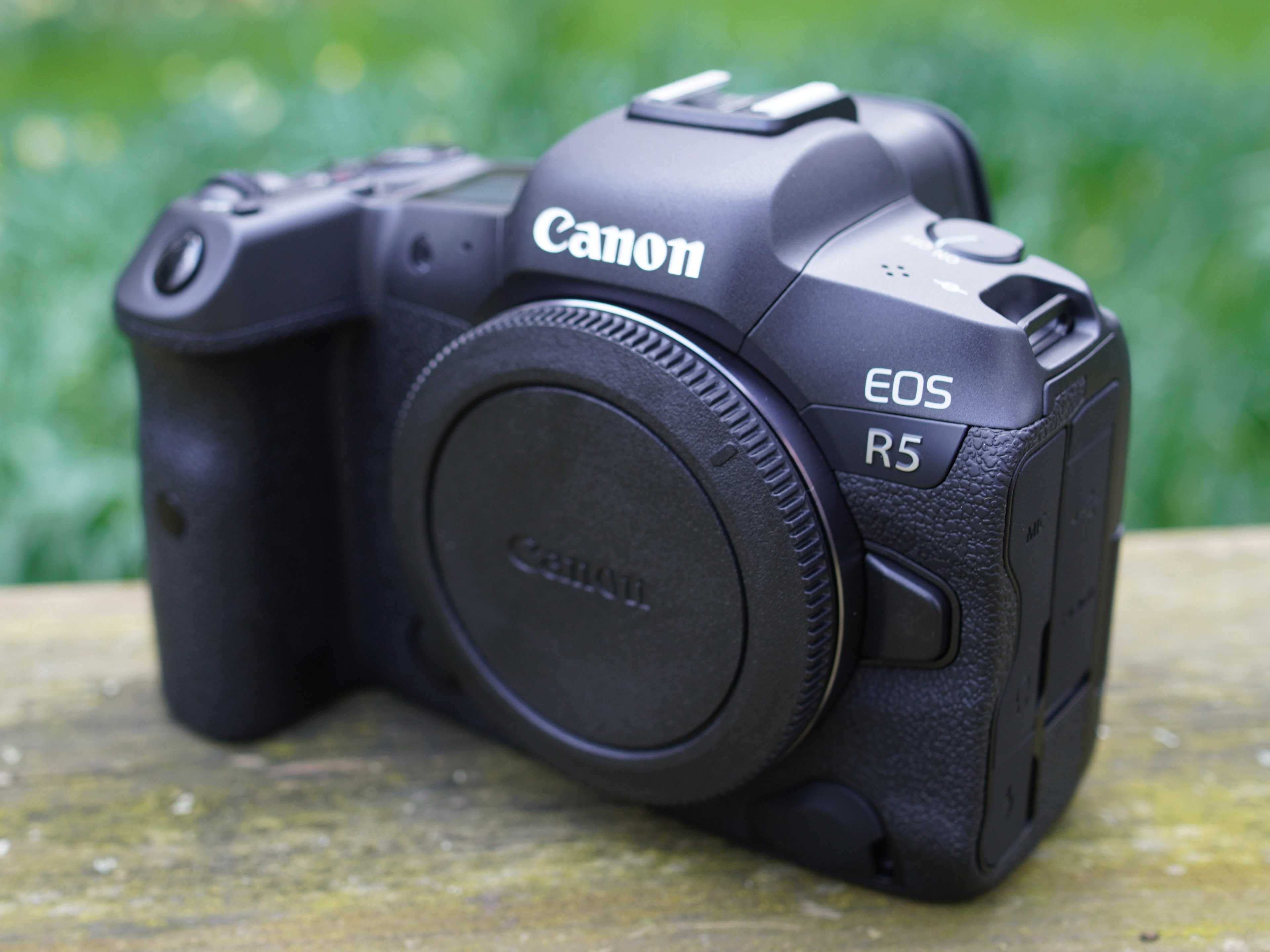Canon’s EOS R5 is an excellent camera for professionals or anyone that’s looking for a supremely capable option for almost any type of photography, from sports and action to studio portraits and landscapes. It’s a 45MP full-frame mirrorless camera that can shoot clips of 8K video, has impressive Dual Pixel autofocus and excellent ergonomics. It can also capture 10-bit HDR stills and video for HDR display and is the spiritual (and mirrorless) successor to Canon’s 5D-series DSLR cameras. It’s not a perfect camera, but we think it’s an excellent and highly competitive addition to an already crowded field of competent high-resolution full-frame mirrorless cameras. Keep reading on for Canon EOS R5 review here.
Contents
Canon EOS R5 Review
Key specifications
- 45MP full-frame Dual Pixel CMOS sensor
- 8K video, with option for Raw or 10-bit 4:2:2 C-log or HDR PQ
- Up to 4K/120p, or oversampled 4K up to 30p
- 100% coverage Dual Pixel II AF system with human and animal detection trained by machine learning
- 12 fps / 20 fps bursts (mech. / elec. shutter)
- 5.76M-dot OLED EVF with 120 fps max refresh rate
- 3.2″ 2.1M-dot fully articulating touchscreen
- 10-bit HDR photos in HEIF format
- 1x CFexpress slot, 1x UHS-II SD slot
- Claimed weather-sealing to EOS 5D Mark IV levels
- 2.4/5Ghz Wi-FI with Bluetooth and FTP connectivity
- CIPA rated to around 320 shots (using EVF)
Design and handling
Design-wise, we’re not looking at a game-changer with the Canon EOS R5. But given the usability of the Canon EOS R, which it’s heavily based on, that’s no bad thing.
In terms of width and height, the EOS R5 is all-but identical to that latter camera; three mysterious millimeters have been added to its depth, and 70g has been added to its weight.
Significantly, the EOS R’s touch bar – the touch-sensitive strip on the top-right of the camera – is gone, perhaps testament to its lukewarm reception. In its place is a chunky, knurled joystick for navigating autofocus points and menus, along the lines of the control on Canon’s other high-end cameras.
Pick up the EOS R5 and the first thing you’ll notice is that it practically floats in the hand. Its 738g weight with a card and battery compares extremely favorably to the Canon EOS 5D Mark IV’s 890g, and even more favorably to the tank-like Canon EOS 1D X Mark III’s 1.4kg kerb weight.
The EOS R5 is still substantial-feeling, with a deep grip that makes it easy and comfortable to hold, but it’s also easy to tote around without it feeling burdensome. Weather resistance is said to be up to the standard of Canon’s 5D series, which professionals will tell you means the R5 should withstand troublesome weather better than some photographers. We’d be confident in most situations.
Canon’s adroit touch when it comes to building cameras that are quick and easy to use is much in evidence. Along with that four-way joystick, which makes diddling through menus or selecting autofocus points a breeze, you also get a click-wheel on the back, plus a dial behind the shutter button and a ring around the mode dial.
Canon EOS R5 Review – Autofocus
The Canon EOS R5’s autofocus is very nearly unbelievable. Its eye-detection is practically infallible, grabbing hold of human faces and holding on even with subjects moving rapidly forwards or backwards through the frame. Subject detection and tracking is similarly impressive.
The new animal detection mode is out of this world, as we raved about in our wildlife test, with the R5 detecting and tracking non-human eyes and faces in some very demanding circumstances.
The R5 uses a new version of Dual Pixel CMOS autofocus, which means focussing is done on the sensor itself. This allows you to manually choose from 5,940 different AF points across 100 per cent of the sensor’s horizontal dimension and 90 per cent of its vertical.
You can cut things however you want; splitting the sensor into large autofocus zones, allowing it to pick entirely for itself, or opting for tiny individual autofocus points using either the joystick or by dragging your thumb across the touchscreen monitor. Once you’ve got a zone picked, the R5’s autofocus will blow you away.
The animal recognition currently works for dogs, cats and birds, but it naturally isn’t blind to other species, too. We’re looking forward to seeing where this autofocus system goes next, but Canon’s certainly made a very impressive start on the EOS R5.
Performance
With the Digic X processor on board, it’s fair to expect good things of the R5’s performance – and so it proved in our tests.
With our SanDisk Extreme Pro card we found the buffer cleared almost as fast as we could shoot, writing multiple frames per second when we’d finished shooting a burst of raw files. The EOS R5 will shoot 12fps using the mechanical shutter, or up to 20 with the electronic shutter.
Purists who are concerned about the jello-effect of electronic shutters can put their minds at rest – we saw very little evidence of it. It was possible, on frames with tall elements in them, to detect a very small amount of distortion, but even with incredibly fast subjects, frames shot with the electronic shutter were just as usable as with the mechanical option. Another plus: the electronic shutter is totally – literally – silent. Wedding photographers and wildlife photographers, rejoice.
Battery life gets a significant thumbs-up as well. It’s still well down on traditional DSLRs, of course, but we managed about four hours of extremely intensive shooting (approximately 2,000 raw frames, all shot using the power-sucking electronic viewfinder) on a single charge.
On a fairly intensive shoot we’d anticipate going through perhaps two batteries in a day, maybe three at a push. Because the R5 is backwards-compatible with the LP-E6N battery – first seen on the 2009 EOS 7D – it’s possible that many upgraders will already have a few spares.







